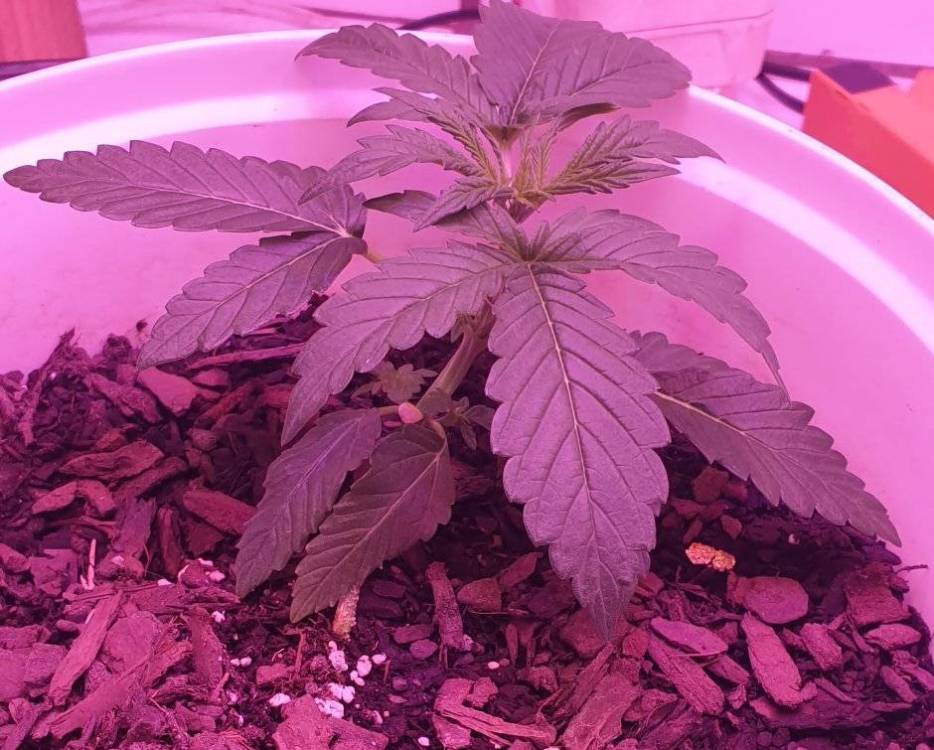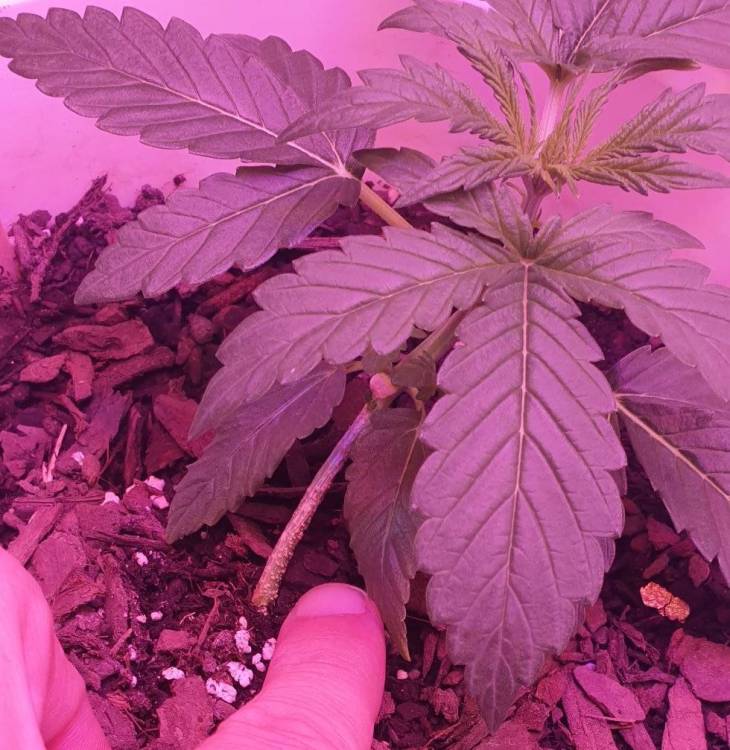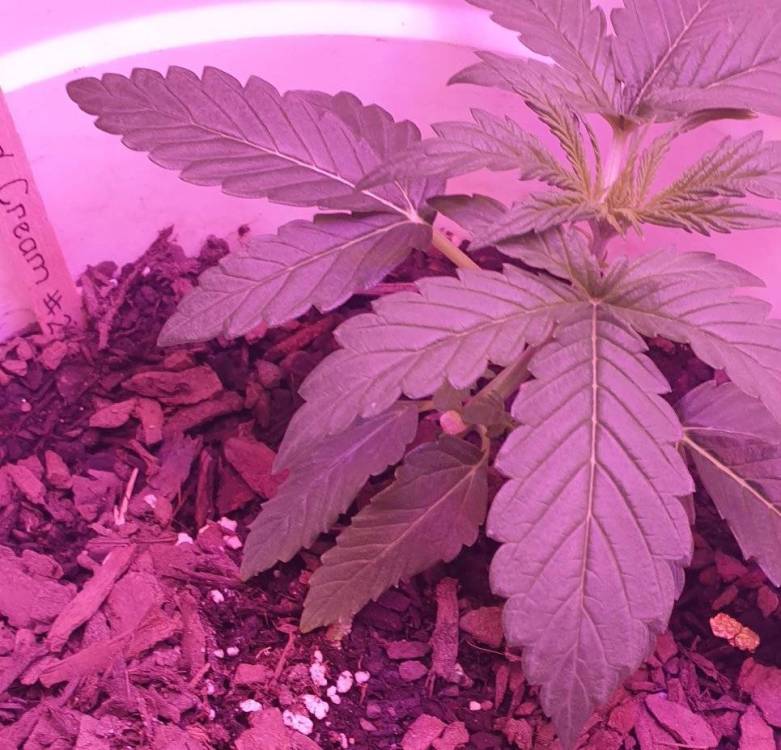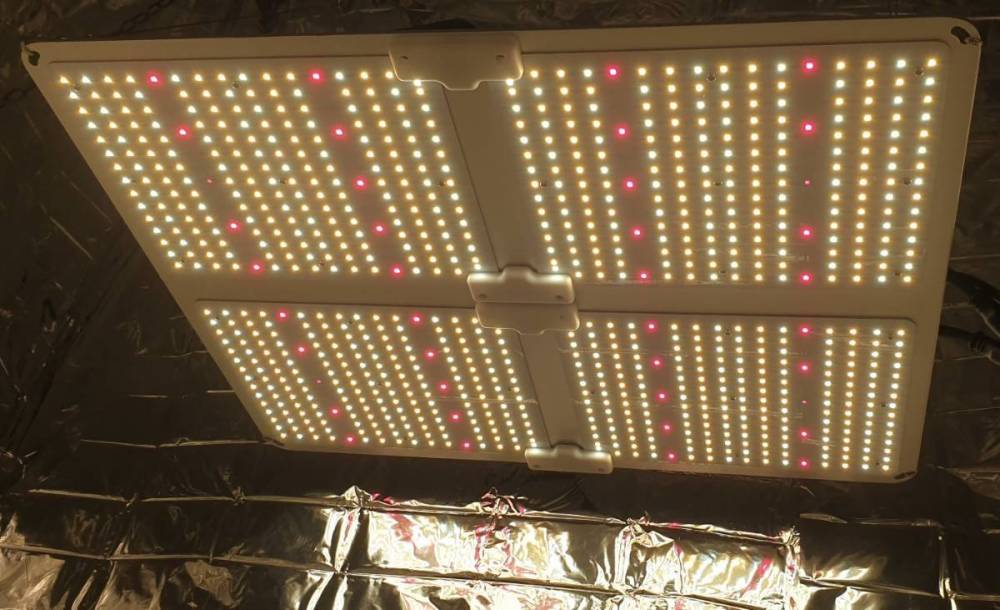-
Posts
47 -
Joined
-
Last visited
-
Days Won
5
Content Type
Profiles
Forums
Calendar
Gallery
Articles
420 Directory
Classifieds
Everything posted by LitItGrown
-
Hey there my fellow Mystics,
Thought I would share something lady-like from the younger ladies.
So about 12 hours after their first LST session, the ladies covered their stems. The Cookies & Cream did not have a fan leaf shading her stem from the light, so this is what this young lady did...

She covered her own stem,
Amazing

I appreciated witnessing this tiny adjustment and again just marvel at the awesomeness of nature!
Till next time.

-
My fellow Mystics,
It's here,
 the 450w Quad Board with Samsung Diodes 2 x Meanwell drivers and dimmer. (1290 PPFD) over 100 DLi.
the 450w Quad Board with Samsung Diodes 2 x Meanwell drivers and dimmer. (1290 PPFD) over 100 DLi.
The ladies are loving it almost as much as I am.
(I never in my life thought I would spend this much on a light, but hey I purchased half a sun for the ladies.
 )
)
420 Love till next time mystics.
-

-

Ah yes thanks for the tip, I got a fan blowing on that sucker, even then you could use it as a hot plate :D. Turns out it's just that that will save me the money that i would have invested in a small heater (winter is coming). Now, I can adjust the height for the temp and the dimmer for the light level

(I modified an indoor fireplace 1.8m x 1.8m x 2m, so i have a nice exhaust for the heat, all in all it's a tropical paradise in there, 29 degrees 45% RH and now I can keep it there drop it raise it, basically have a bit more control off the environment than I had with the now seedling lights

I tested the environment specifically for the Malawi Gold (which I will plant soon) and it loves almost desert kind of heat 30 - 37C and 30 - 50 RH, still working on my soil mix, cause they like low nitrogen and high phosphor from seed to flower... So yeah, we will see if I bit off more than I can chew, but at least it won't be the hardware's fault.
-
-
Greetings again, my fellow Mystics, as you all know time is a currency more than is a commodity these days, however I shall find the time open grow dairies for the ladies here, Local Genetics - 420SA Cannabis Forum as @III_Evan suggested. And since all 6 Ladies, 2 x Cookies & Cream Fem Auto's, 2 x Girl Scout Cookies Fem Auto's and 2 x Sour Diesel Fem Autos are from MarijuanaSA, and all 6 took less than 24 hours to soak and sprout a tap root. - The 1st three on the 30st of March and 53 Hours later planted them directly to their final pot - The 2nd Three on the 5th of April, and 50 Hours later planted them directly to their final pot as well. I shall elaborate more in the appropriate section as mentioned above.
All of them are doing nicely, the older Sour Diesel, as you will see in the diaries has a, what looks like a genetic mutation. (I suspect there will be quite the debate on that one.) Tomorrow will be their second feed - the older plants skipped the first week of feeding, the younger plants looked a bit stronger on their 1st week, so I gave them a feeding on day 1 (meaning their 1st scheduled feed - not actual day one), since they are all already in their final pots, I will be honest it's my first time with fem autos and from what I gather they stress easy and so I opted to go a way that would least disturb the roots.
So fellow mystics, l shall update here, Local Genetics - 420SA Cannabis Forum soon.
And remember, don't drink and drive..., smoke and fly!














